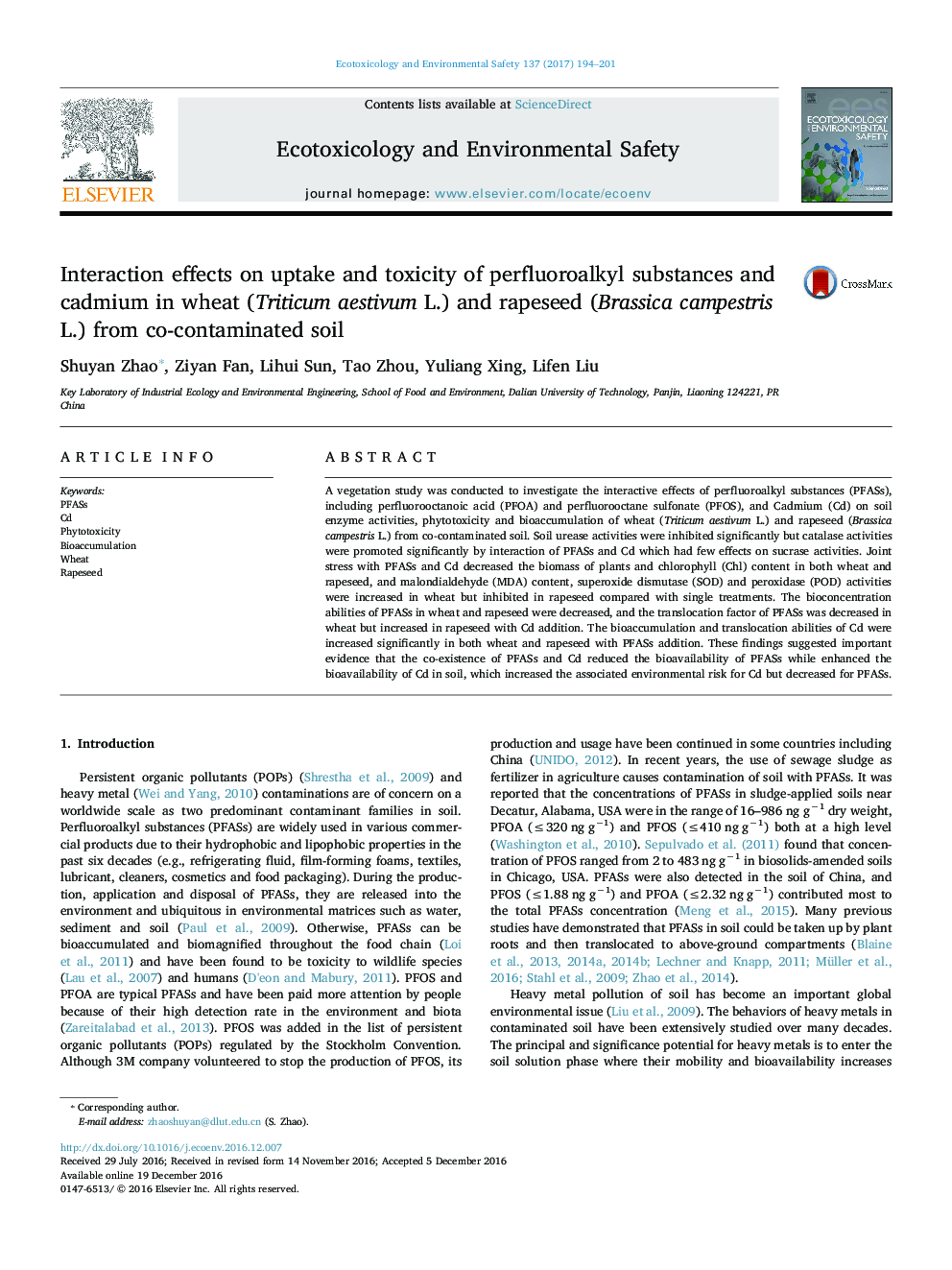| Article ID | Journal | Published Year | Pages | File Type |
|---|---|---|---|---|
| 5748057 | Ecotoxicology and Environmental Safety | 2017 | 8 Pages |
â¢Urease activity was inhibited while catalase promoted in PFASs-Cd co-spiked soil.â¢The coexistence of PFASs and Cd could affect the biological responses of plants.â¢The bioconcentration of PFASs in plants from soil were decreased with Cd addition.â¢The co-presence of PFASs and Cd enhanced the bioavailability of Cd in soil.
A vegetation study was conducted to investigate the interactive effects of perfluoroalkyl substances (PFASs), including perfluorooctanoic acid (PFOA) and perfluorooctane sulfonate (PFOS), and Cadmium (Cd) on soil enzyme activities, phytotoxicity and bioaccumulation of wheat (Triticum aestivum L.) and rapeseed (Brassica campestris L.) from co-contaminated soil. Soil urease activities were inhibited significantly but catalase activities were promoted significantly by interaction of PFASs and Cd which had few effects on sucrase activities. Joint stress with PFASs and Cd decreased the biomass of plants and chlorophyll (Chl) content in both wheat and rapeseed, and malondialdehyde (MDA) content, superoxide dismutase (SOD) and peroxidase (POD) activities were increased in wheat but inhibited in rapeseed compared with single treatments. The bioconcentration abilities of PFASs in wheat and rapeseed were decreased, and the translocation factor of PFASs was decreased in wheat but increased in rapeseed with Cd addition. The bioaccumulation and translocation abilities of Cd were increased significantly in both wheat and rapeseed with PFASs addition. These findings suggested important evidence that the co-existence of PFASs and Cd reduced the bioavailability of PFASs while enhanced the bioavailability of Cd in soil, which increased the associated environmental risk for Cd but decreased for PFASs.
Graphical abstractDownload high-res image (250KB)Download full-size image
